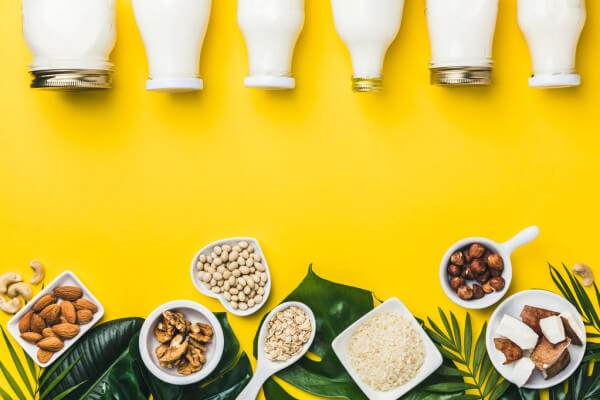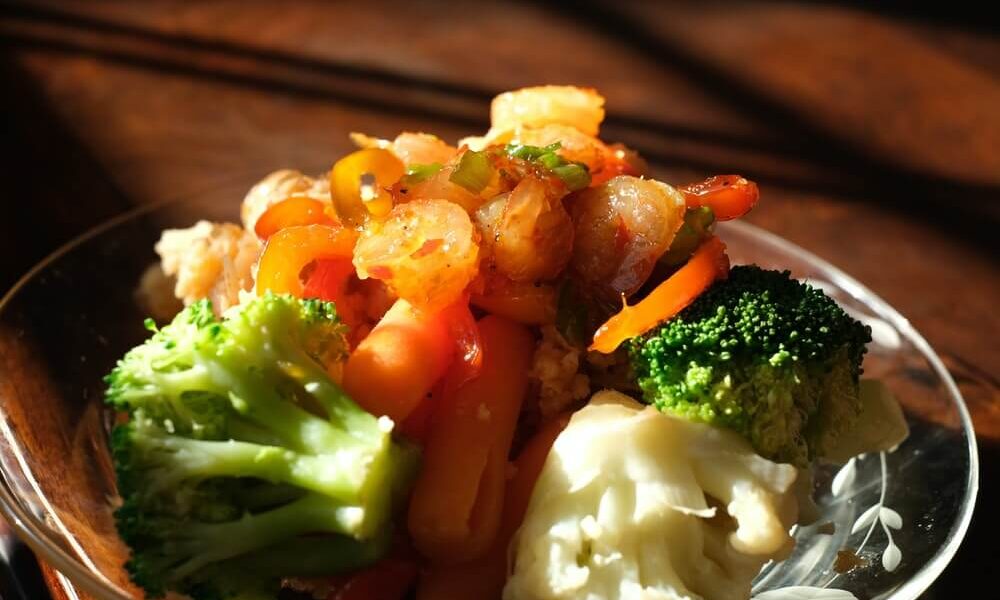Milk is considered an essential part of a balanced diet for its multifaceted benefits. It is a rich source of calcium, protein, and other nutrients that are necessary for the growth and development of the body, especially during the early years of life.
However, a lot of people have to avoid dairy (milk and other milk-based products) because of allergies, sensitivities and lactose intolerance. Lactose intolerance is the inability to process the sugar in milk, resulting in allergy, affecting around 65% of the population. Such people may miss out on the required quantities of essential nutrients that are required in the diet .
A dairy-free diet plan may sound like an unbalanced diet, but with the correct substitutes, one can ensure that they fill in the gaps and consume all nutrients in the correct quantities. There are various other common food options available that can provide the same nutrients as in milk and dairy products.
Is there a difference between dairy-free and non-dairy products?
People should also understand the difference between dairy-free and non-dairy items while browsing the supermarket for potential substitutes for milk products. Dairy-free products are completely free from milk and are rather prepared from alternative milk options such as soy milk, almond milk, etc.
On the other hand, the products that are marked non-dairy contain derivatives of milk in the form of milk protein. They may contain some percentage of casein, whey, caseinates, and other milk proteins that may not be a good fit for lactose-intolerant people or those who want to follow a diet plan for vegans.
What are the alternatives to milk for a dairy-free diet?
Whether you want options that support your vegan lifestyle, are lactose intolerant, or have just watched Jonathon Safran Foer’s Eating Animals documentary, there are various alternatives available in the market to help you remove milk and dairy products from your diet.
What can you eat?
You can consume milk substitutes while following different diet plans. Along with that, include dairy-free food that is rich in calcium, protein, and vitamin D to fill the nutritional gap left by the absence of milk. You can also consume products that are labeled as dairy-free.
Here are the nutrients that need attention to substitute for loss of nutrients found in dairy.
- Protein
Protein is an essential part of the diet, especially if you follow a lifestyle with a high level of physical activity.. Protein has a high satiety factor that helps reduce the need to eat frequently, thus helping replace frequent feeding of carbohydrate and fats. It is an essential addition to a dairy-free diet plan.
You should include protein-rich items like soybean, tofu, rice and pea protein powders in your diet. If you follow a non-vegetarian diet plan, then eggs and fish can also be great options to fulfil your body’s protein needs.
- Calcium
Milk is essential for building bone mass. It is considered the most vital mineral for growing children. On average, an adult person requires around 1000 to 1300 mg of calcium per day. You can fulfil this need by adding non-dairy products such as dark green leafy vegetables, calcium fortified soy milk and almond milk, calcium supplements etc.
- Vitamin D
Vitamin D is required by the body so that it can process and absorb the calcium obtained from the diet. If you are adding calcium-rich products to your dairy-free diet plan, you will need a substitute for dairy milk that can provide the required amount of Vitamin D to your body as well. Food items such as fortified cereals, eggs, fish, cod liver oil, etc., are rich non-dairy sources of Vitamin D.
- Phosphorous
Another mineral that will get removed from your diet once you cut off milk will be phosphorous. It is required to ensure proper cell function in the body. You can add legumes, bread, and fatty fish to ensure your body gets an adequate amount of phosphorus.
- Riboflavin
Riboflavin or Vitamin B2 is required to process carbohydrates in the body. Thus, you will need it essentially if your target is to lose weight. Whole grains, leafy vegetables, sweet potatoes, B-complex supplements are some options that can be added to the diet.
Some of the most commonly available and affordable products are provided below.
- Non-Dairy Milk
Various natural and plant-based milk alternatives are available in stores these days. Milk can be extracted from soy, almond, rice, coconut, and seeds such as hemp seeds. You will find refrigerated soy milk available in similar packaging to usual dairy milk. These options are safe to use for people with dairy allergies.
- Non-Dairy Yoghurt
Non-dairy yoghurt is created from non-dairy alternatives to milk. Most products that you will find in the market are created from soy milk and provide similar flavour and texture as their dairy counterparts.
- Non-Dairy Cheese
Various companies have begun producing non-dairy cheese options. Ensure that while buying, you check the list of ingredients. There should be no casein or its derivative present as those are derived from dairy milk.
You can also find options for non-dairy butter, ice cream, cream cheese, and much more in natural food stores and supermarkets.

Dairy-Free Diet Plan
Each diet plan varies based on the age, activity level, and lifestyle of the person. A vegetarian meal plan for bodybuilders and physically active adults will include a lot of proteins and fat. However, one can consider the average percentage of essential nutrients required by a person as follows.
- Fats: 25%
- Carbohydrates: 35%
- Protein: 40%
- Fibre: 10 to 15%
Depending upon your lifestyle choices, you can set an aim for the daily calorie intake. Based on that, you can create a dairy-free diet plan that includes dairy-free options with the required percentage of nutrients and match your required calorie intake. The following table gives you an example of how your dairy-free diet plans for weight loss should look like.
| Breakfast | Lunch | Dinner | Snacks |
| Overnight oats made with soy milk (or any other plant-based milk of your choice). Fill the bowl with fruits and berries (according to the season) and peanut butter. | Vegetable soup of your choice with toasted whole wheat pita or bread | Curry made with vegetables such as onions, carrots, bell peppers, chickpeas, tofu, etc. You can choose to have it with multigrain roti. | Raw vegetables such as carrots (have zero percentage of fats), mushrooms, cucumbers, etc., with hummus |
| Multigrain toast with avocado and spices as per your choice | Salad of your choice with ample vegetables and dairy-free dressing | Bowl with sweet potato, fresh carrots, cucumbers, jackfruit, avocado, and sesame seeds | Soy or other plant-based milk with a granola bar |
| A smoothie with spinach (or any other leafy green vegetable of your choice), frozen banana (or other seasonal fruits), plant-based milk and peanut butter | Red rice with curry with no dairy products. Coconut milk used as a substitute for milk-based dishes | Roasted or steamed sweet potato with beans, salsa, and steamed broccoli | Dairy-free yoghurt with berries |
| Red rice dosa or poha | Mexican bowl with red beans, vegetables, and salsa sauce. You can add chicken if it agrees with your lifestyle. | Mashed potato, bell peppers, carrots and cabbage sautéed with fish cooked in herbs | Hot chocolate made with dark chocolate and coconut milk |
A dairy-free diet plan is suitable for individuals with various digestion problems primarily due to the lack of inability to break down lactose. Do not forget to calculate your calories and ensure that you intake the required amount of nutrients to maintain your health while following the diet routine. With Muscle Layman, you can get customized training and nutrition coaching.
Check out the services section on www.musclelayman.com We design personalized and quantified dairy-free diet plans and carb-free diet plans, to complement your fitness goals.


